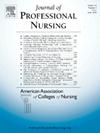Embedding cultural safety in nursing education: A scoping review of strategies and approaches
IF 2.9
3区 医学
Q1 NURSING
引用次数: 0
Abstract
Introduction
Post-secondary institutions can no longer ignore calls to action. Nursing programs are responsible for addressing racism and discrimination by integrating cultural safety into baccalaureate nursing curricula. This scoping review of peer-reviewed literature will reveal how cultural safety is integrated into nursing education across North American post-secondary institutions.
Materials and methods
57 records met the criteria for this scoping review between the dates of January 2016 to July 2024. The database search was conducted from November 7, 2021, to November 9, 2021, and then updated on September 17, 2024, to include articles up to and including July 2024, yielding 3444 total search results (1448 from Medline; 1996 from CINAHL). Results were manually screened, and duplicates found were removed.
Results
The articles were analyzed thematically to identify strategies for integrating cultural safety into undergraduate nursing education. Four main themes were identified: experiential, theoretical, analytical, and multimodal learning.
Conclusion
This scoping review highlights nurse educators' role in fostering cultural safety and the importance of considering multiple strategies in curricular development. Strategies include practice experiences, simulations, storytelling, and case-based learning. To provide safe nursing care, education must be inclusive and responsive to people of all races, genders, abilities, and sexual orientations. By applying the concept of cultural safety to nursing education, students are required to acknowledge bias and address issues of power, colonialism, racism, and discrimination that exist in healthcare. These findings provide a foundation for future, more focused research. Further studies could expand on this work by evaluating the effectiveness of specific pedagogical strategies and exploring ways to better support nurse educators in promoting culturally safe learning environments.
在护理教育中嵌入文化安全:策略和方法的范围审查
高等教育机构不能再忽视行动的呼吁。护理课程负责通过将文化安全纳入护理学士课程来解决种族主义和歧视问题。这篇同行评议文献的范围审查将揭示文化安全如何融入北美大专院校的护理教育。材料和方法57条记录符合2016年1月至2024年7月期间的范围审查标准。数据库检索从2021年11月7日至2021年11月9日进行,然后在2024年9月17日更新,包括截至2024年7月的文章,共产生3444个搜索结果(来自Medline的1448个;1996年从中国ahl)。人工筛选结果,并删除发现的重复项。结果对文章进行专题分析,找出将文化安全融入本科护理教育的策略。确定了四个主要主题:经验学习、理论学习、分析学习和多模式学习。结论本综述强调了护理教育者在促进文化安全方面的作用,以及在课程开发中考虑多种策略的重要性。策略包括实践经验、模拟、讲故事和基于案例的学习。为了提供安全的护理,教育必须包容所有种族、性别、能力和性取向的人。通过将文化安全的概念应用到护理教育中,学生需要承认偏见,并解决医疗保健中存在的权力、殖民主义、种族主义和歧视问题。这些发现为未来更有针对性的研究奠定了基础。进一步的研究可以通过评估具体教学策略的有效性和探索更好地支持护士教育者促进文化安全学习环境的方法来扩展这项工作。
本文章由计算机程序翻译,如有差异,请以英文原文为准。
求助全文
约1分钟内获得全文
求助全文
来源期刊
CiteScore
4.80
自引率
8.00%
发文量
153
审稿时长
52 days
期刊介绍:
The Journal will accept articles that focus on baccalaureate and higher degree nursing education, educational research, policy related to education, and education and practice partnerships. Reports of original work, research, reviews, insightful descriptions, and policy papers focusing on baccalaureate and graduate nursing education will be published.

 求助内容:
求助内容: 应助结果提醒方式:
应助结果提醒方式:


